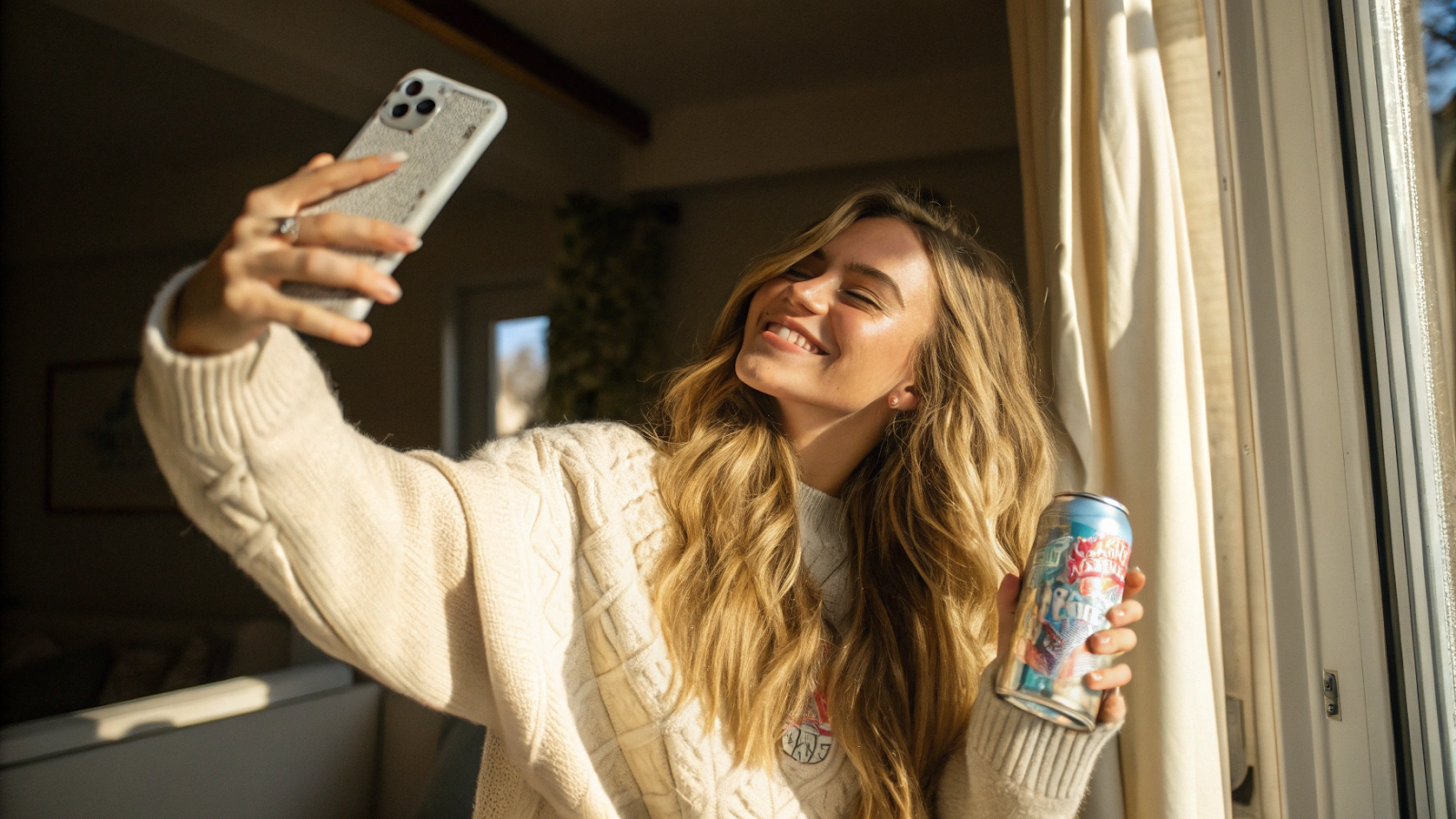From 2019 to 2021 influencer marketing spend jumped from $6.5 billion to $13.8 billion. With investments like these, it’s critically important for marketers to understand exactly how their influencer marketing investments perform for their brands.
Effectively measuring and understanding your influencer marketing performance depends largely on five things.
- Your objective: what kind of impact is your brand attempting to achieve by investing in influencer marketing and what KPIs matter for your goals.
- Your brands tracking infrastructure: Is your brand technically set up to track the data of your influencer marketing efforts, ie: the impressions, the clicks, the conversions.
- Your preferred format: Are you running an Instagram story influencer campaign or an In-feed post influencer campaign? This matters. Different formats mean different influencer KPIs.
- Your chosen networks benchmarks: Instagram has different engagement benchmarks than TikTok. This is important when evaluating the success of your influencer activation.
- Your own brand benchmarks: Chances are this isn’t your first foray into a paid marketing investment. You likely have an idea of how much awareness, engagement, or conversions other tactics have given your brand. Use that info to help you evaluate the success of your influencer investment.
Now, let’s unpack each of these five essential components to measure your influencer marketing investment further.
Understand your influencer marketing objective
Like other marketing tactics, influencer marketing can be used to achieve a variety of different outcomes. For simplicity's sake let’s focus on the three most common objectives brands typically focus on when investing in influencer marketing.
- Awareness
- Engagement
- Conversions
Each of these different objectives is tied to a specific set of metrics that are helpful in evaluating if your brand's investment was successful in achieving its desired outcome. Let’s look at each of them in more detail.
Influencer marketing KPIs for brand awareness
When your primary objective is influencer marketing for brand awareness that means you’ll want to be sure you track these metrics:
- Impressions: the amount of times your content was displayed.
- Reach: the total amount of unique people who saw your content.
Impressions and reach will help you know exactly how many people you were able to reach with your influencer investment.
Influencer marketing KPIs for engagement
If you are more focused on engagement than awareness, you’ll want to pay close attention to your engagement metrics in comparison to your total impressions.
- Clicks
- Likes
- Comments
- Shares
- Follows
The combined total of each of these values, will add up to a total number that you will then divide by your total impressions. This leaves you with your engagement rate, which is arguably the most important metric to evaluate when you are focused on an influencer marketing campaign for engagement.
Influencer marketing KPIs for conversions or ROI
Finally, if you are focused mostly on using influencer marketing for conversions or ROI you’ll want to know exactly which action you define as a conversion for your brand and how you plan to attribute your influencer marketing investment toward that specific conversion. Typically metrics in the conversion realm are:
- CPA: cost per acquisition, ie: how much did it cost to convert your target customer.
- CR: conversion rate, ie: at what rate did your target customer see your message and actually take your desired action.
- ROI: return on investment, ie: how much did you invest in your influencer marketing campaign and how much money did you make in return. Ultimately, this metric allows you to deduce if your investment was worth it.
Regardless of your desired objective, make sure you use the right metrics to measure your influencer marketing performance and spend time on a thoughtful influencer strategy.
Tracking your influencer marketing performance
Before you dive into your actual influencer marketing campaign, make sure that you not only consider how you will define success but also how you will track its effectiveness. This takes time and research to figure out what makes the most sense for your brand. There are two ways to approach influencer marketing tracking.
1 - Manually track influencer data
2 - Use an influencer marketing platform to track influencer data
If you are running a small scale influencer campaign and you have a tight budget, manual might be your best bet. This means that you’ll source your influencer partners, collaborate with them and track performance through spreadsheets, emails, and UTM parameters. You’ll have to rely on the influencer to provide you with their post analytics and hope they append the correct link to their post.
If you can invest in an influencer platform, this will save from having to hunt down your influencer post performance data. Influencer platforms that have network partnerships, often meaning they have access to the networks API, will automatically pull in the post data to their dashboard in a clean and aggregated format. Typically these platforms also have integrations with popular platforms like Shopify, or they develop proprietary tracking methods to help ensure you receive the right data around your influencer activation.
Once you have your tracking infrastructure confidently set up and working, the next step is to layer on how your influencer tactic and format (ie: Instagram, TikTok, and still image or video etc) will impact your measurement evaluation.
Recommended Reading:
How To Measure the Return on Investment (ROI) of Your Influencer Marketing Campaigns
Influencer measurement by social network and format
Once you’ve selected your objective and understand it’s KPIs, next you should take it one step further and consider the type of influencer post you will run. It used to be as simple as choosing between a static image or a video. Now, with the explosion of social media networks in the past decade, formats have expanded to short-form video, gifs, cinema-graphs, Instagram Stories, Instagram Reels, and more. The list can sometimes feel overwhelming and endless. To keep it simple let’s just examine what it looks like to measure a static image versus a video.
For both static and video, impressions and reach will still be straightforward. Conversions will also be the same metrics as previously mentioned. The main difference between these two formats is the engagement metrics. Both will still display clicks, likes, comments, and shares but video will reveal a bit more. Don’t ignore the below video metrics when evaluating engagement for this format:
- CPV: cost per video view
- VCR: video completion rate
These two metrics will give you further insight into your audience's interest in your message. Did they watch the entire video or only the first three seconds of it? Each social network requires its own strategy to achieve your desired objective. Looking to generate ROI with TikTok? Curious about testing Instagram guides? We’ve got you covered. Learn more about how to tackle and achieve results on Instagram, TikTok, and the others here.
Understanding your influencer performance
We’ve covered what influencer KPIs to consider based on your objective, how to track your influencer marketing data, and what metrics to evaluate based on your influencer tactic and format. Now we will finally explain how you make sense of your influencer performance.
Making sense of your influencer marketing performance is two fold.
1 - Make sure you understand the benchmarks of the social network where you have chosen to run your influencer campaign.
2 - Use your own data to inform your performance.
Social Media benchmarks
Each network’s algorithm performs differently and as a result can render very different results for your campaigns. Here are some great resources on two of the more popular social networks, to begin understanding network benchmarks further.
Your own brand benchmarks
Second, use your own data to inform your performance. You are your best competition. If you have run any other marketing tactic in the past you can use that information as a standard to compare against your influencer marketing campaign.
For example, let’s say you are a soap brand. You have previously run paid ads on Instagram to drive people to your site and purchase your product. This campaign drove 20 purchases for your company. Now let’s say you try out influencer marketing. You run an influencer campaign promoting the same soap product, set up your tracking properly, and find that your influencer partnership drove 30 purchases for your company. Using the prior data from your paid instagram campaign you can deduce that your influencer marketing campaign was actually more successful in achieving your objective of product purchases. To learn more about benchmarking for your brand, check out this useful step by step article by our friends over at social media management tool, buffer.
All in all, Influencer marketing is complex but effective. It’s still the new kid on the block, which means marketers are learning daily how to best use it to their advantage. But as with all the other available online marketing tactics, it’s up to you to figure out if it makes sense for your brand. You’ll never know if you don’t give it a go.

















